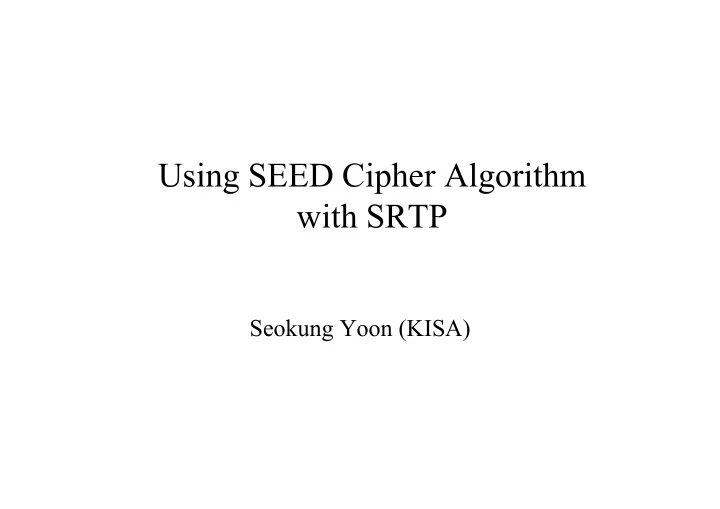

Using SEED Cipher Algorithm with SRTP Seokung Yoon (KISA)
Goal / Motivation • Goal : The SEED cipher algorithm would be the default cipher together with AES in SRTP • Motivation – In Korea, many companies provide VoIP service and we predict the VoIP market could grow to as much as $10 billion by the year 2009 – Our agency developed a VoIP phone to support secure communications for user privacy, and adopted SRTP for confidentiality to the RTP traffic – We add two algorithms for multimedia data encryption • AES – default cipher in SRTP and SEED – national standard – The SEED cipher algorithm is a national industrial association standard and is widely used in South Korea for electronic commerce and financial services that are operated on wired and wireless communications.
The SEED Cipher Algorithm (1/2) • developed by KISA in 1999 • Standard status - TTA Standard in Korea TTAS.KO-12.0004, “128-bit Symmetric Block Cipher (SEED)” - IETF Standard RFC 4269, The SEED Encryption Algorithm RFC 4010, Use of the SEED Encryption Algorithm in CMS RFC 4162, Addition of SEED Cipher Suites to TLS RFC 4196, The SEED Cipher Algorithm and Its Use with IPSec - ISO/IEC Standard JTC 1/SC 27 N3979, “IT Security technique – Encryption Algorithm – Part3 : Block ciphers”
The SEED Cipher Algorithm (2/2) • Feature - Block cipher with DES-like(Feistel) structure - The size of input/output bit is fixed 128-bit (Padding is required by SEED to maintain a 16-octet blocksize) - A strong round function against known attacks - The number of rounds is fixed 16 - Mixed XOR and Modular addition operation
Example • The initial value, IV, shall be defined by the SSRC, the SRTP packet index i, and the SRTP session salting key k_s, as below: IV = (k_s * 2^16) XOR (SSRC * 2^64) XOR (i * 2^16) or shall be generated randomly <AES-CM> <SEED>
Next Steps • Comments or Questions ?? • Working Group Item??
Recommend
More recommend